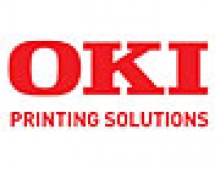
NTT's Lossless Audio Compression Technology Becomes an MPEG Standard
NTT Corp. has announced that an audio lossless compression (lossless encoding) technology largely developed by the company was approved as an MPEG international standard specification dubbed "MPEG-4 ALS."
The technology is applicable for storing master data and transmitting high quality audio data, among other uses.
Lossless encoding is a compression technology, which can reproduce the original waveform data without a change of any bit. However, in terms of data compression rates, the technology is generally inferior to lossy encoding technologies such as MP3. The MPEG-4 ALS' data compression rates extend from 15% to 70%, depending on factors such as sampling frequencies and music genres.
Existing lossless compression technologies include Microsoft Corp.'s "Windows Media Audio Lossless," Apple Computer, Inc.'s "Apple Lossless" and free software such as "Monkeys," "FLAC" and "OptimFrog." NTT's latest technology boasts higher compression rates than these technologies, as well as a reduction in time required for decoding. According to the company, 30 seconds of audio data sampled at 48 KHz, for example, can be decoded in less than a second using the latest PCs. NTT also claimed the technology's other advantages over free software are more specific rights, including patents and long-term support for users.
NTT aims to start an organization to manage MPEG-4 ALS licensing under the MPEG LA in a year or so. Licensing is expected to be commercial. "Let's say, if Microsoft acquires an MPEG-4 ALS license and introduces the codec to Windows, anyone will be able to use MPEG-4 ALS freely," said a company spokesperson.
The MPEG-4 ALS format's sampling frequencies extend to 192 KHz. The technology can compress audio data consisting of 32-bit integers or floating points. It also can compress up to 65,536 channels at the same time. By utilizing this great simultaneous compression capability, applications could be broadened to include compression of data other than audio. For example, the technology can be used to simultaneously measure several hundreds of channels of data in a brain's magnetic field from different parts of the brain. The more related data between channels, the higher compression rates rise. In the abovementioned case of a brain's magnetic field, data compression rates are said to be around 15%.
Lossless encoding is a compression technology, which can reproduce the original waveform data without a change of any bit. However, in terms of data compression rates, the technology is generally inferior to lossy encoding technologies such as MP3. The MPEG-4 ALS' data compression rates extend from 15% to 70%, depending on factors such as sampling frequencies and music genres.
Existing lossless compression technologies include Microsoft Corp.'s "Windows Media Audio Lossless," Apple Computer, Inc.'s "Apple Lossless" and free software such as "Monkeys," "FLAC" and "OptimFrog." NTT's latest technology boasts higher compression rates than these technologies, as well as a reduction in time required for decoding. According to the company, 30 seconds of audio data sampled at 48 KHz, for example, can be decoded in less than a second using the latest PCs. NTT also claimed the technology's other advantages over free software are more specific rights, including patents and long-term support for users.
NTT aims to start an organization to manage MPEG-4 ALS licensing under the MPEG LA in a year or so. Licensing is expected to be commercial. "Let's say, if Microsoft acquires an MPEG-4 ALS license and introduces the codec to Windows, anyone will be able to use MPEG-4 ALS freely," said a company spokesperson.
The MPEG-4 ALS format's sampling frequencies extend to 192 KHz. The technology can compress audio data consisting of 32-bit integers or floating points. It also can compress up to 65,536 channels at the same time. By utilizing this great simultaneous compression capability, applications could be broadened to include compression of data other than audio. For example, the technology can be used to simultaneously measure several hundreds of channels of data in a brain's magnetic field from different parts of the brain. The more related data between channels, the higher compression rates rise. In the abovementioned case of a brain's magnetic field, data compression rates are said to be around 15%.

















